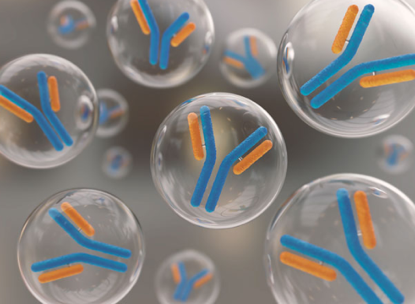Perhaps the most basic unit of defense in the battle against pathogens is the ubiquitous antibody.
In an immunological context, pathogens are typically referred to as antigens (literally, antibody generators) to indicate the most likely immunological response that they would invoke. Antibodies can also be called immunoglobulins, in reference to the immunological function these globular proteins fulfill. Practically anything can trigger an antibody response, and due to this fact, it would stand to reason that antibodies have a wide applicability. They do, in truth – there is a certain region of the antibody that purposely undergoes indiscriminate recombination for the formation of a unique binding site. This region, the variable region (Fab), is designed this way as a highly-diversified form of foreign epitope binding. This constitutes the operative mechanism for this scattershot strategy of the immune system. Another important part of the antibody is its constant region (Fc). This region, the ‘spine’ of the antibody, is sequentially similar with other antibodies of its class, or isotype. The 5 main antibody isotypes in humans (IgM, IgA, IgD, IgG, IgE) are classified as such by their shared constant regions and their corresponding complexing behaviors.
Individual antibodies consist of 4 subunits bound together with disulfide interactions. Two heavy chains are bound together with two light chains bound to their extremity. As a whole, the antibody has a ‘Y’ shape that can be formed by the heavy chains – these two large chains are bound at the base and have a hinge region in the center that splits them apart at the top. The upper domains of the heavy chains are themselves bound to the light chains with disulfides. The lower base of this molecule is the constant region and the upper two branches are the variable regions that bind to the antigen epitope. The larger heavy chains have a typical MW of ~55 kDa and the smaller light chains have a MW of ~23 kDa, making them easily distinguishable by SDS-PAGE under reducing conditions.
These qualities indicate that antibodies are not only a versatile and potent force for pathogenic immunity, but are also scientifically and technologically cooperative. Antibodies are powerful and promising molecules with plenty of scientific and medicinal potential yet to be realized.
—
ARVYS Proteins, Inc. is a leader in the space of Antibody Development & Production. From generation of antigen to characterization of antibodies ARVYS Proteins provides protein science services for critical projects.




